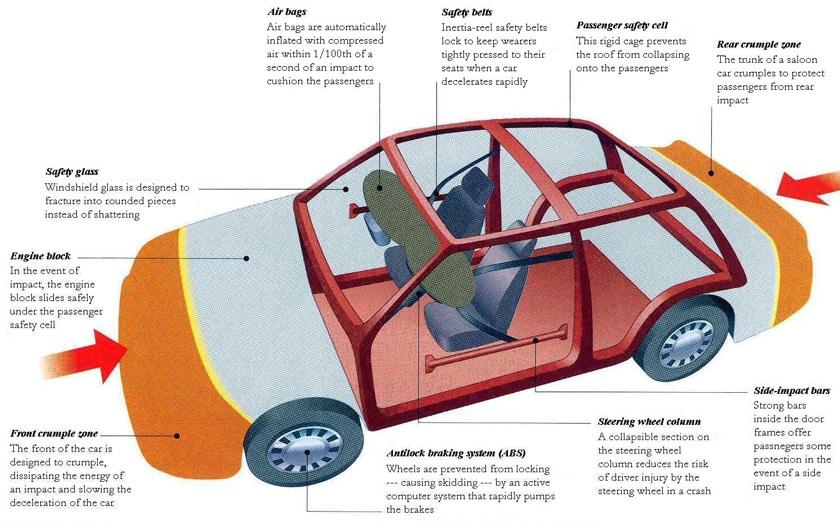FCC Advances Auto Safety with New Spectrum Regulations
The Federal Communications Commission (FCC) has taken a significant step forward in enhancing vehicle safety through the implementation of new spectrum regulations. These rules aim to allocate specific frequencies for vehicle-to-everything (V2X) communications, which will facilitate direct communication between vehicles and surrounding infrastructure. By harnessing these dedicated channels, the FCC hopes to minimize interference from other wireless signals, thus enabling safer and more efficient transportation systems. This initiative represents a crucial pivot towards a future where connected vehicles can better predict and respond to road conditions and potential hazards.
Among the key provisions of the newly established spectrum regulations are:
- Increased bandwidth: The allocation of more spectrum will allow for enhanced data transmission rates, improving communication capabilities between vehicles.
- Support for advanced technologies: The regulations will bolster the development and deployment of innovative technologies such as automated driving systems and advanced driver-assistance systems (ADAS).
- Interoperability standards: Establishing uniform communication protocols will ensure that vehicles from different manufacturers can effectively communicate with each other, enhancing overall road safety.

Understanding the Implications for Vehicle Communication Technologies
The recent decision by the FCC to implement new auto safety spectrum rules marks a pivotal shift in the landscape of vehicle communication technologies. These regulations aim to allocate spectrum for Dedicated Short-Range Communications (DSRC) and Cellular Vehicle-to-Everything (C-V2X) systems, both essential for enhancing vehicular safety and efficiency. By ensuring that these technologies can function without interference, the FCC is paving the way for innovations that prioritize real-time data sharing among vehicles, infrastructure, and pedestrians.
With this regulatory framework in place, several implications emerge for various stakeholders within the automotive ecosystem. Key points include:
- Improved Safety: Enhanced vehicle-to-vehicle (V2V) and vehicle-to-infrastructure (V2I) communications can significantly reduce traffic accidents and improve response times in emergency situations.
- Innovation Drive: Clear spectrum guidelines can encourage manufacturers and tech companies to invest in the development of advanced safety features and connected services.
- Market Dynamics: The harmonization of communication technologies may create competitive advantages for companies that effectively leverage these new capabilities, impacting market share and consumer choice.

Strengthening Road Safety: Key Features of the New Rules
The new regulations introduced by the FCC aim to enhance road safety through innovative technological advancements and stricter compliance measures. One of the key features includes the allocation of dedicated spectrum for vehicle-to-everything (V2X) communications, which allows vehicles to instantly receive crucial alerts about road conditions and hazards from other road users, infrastructure, and traffic management systems. This not only enhances situational awareness among drivers but also fosters a collaborative ecosystem for improved traffic flow and accident prevention.
In addition to V2X communications, the revised rules mandate the integration of advanced driver assistance systems (ADAS) in all new vehicles. These systems encompass features such as automatic braking, lane departure warnings, and adaptive cruise control, contributing significantly to minimizing human error—a primary factor in many road accidents. Furthermore, enforcement of stringent regulations on vehicle manufacturers ensures that these safety technologies are not only innovative but also accessible, thus prioritizing the welfare of all road users and setting a new standard in vehicle safety protocols.

Recommendations for Automakers to Adapt to Spectrum Changes
As the FCC implements new auto safety spectrum rules, automakers must pivot quickly to embrace these changes. Staying ahead of the technological curve requires a proactive approach, and manufacturers should consider the following strategies:
- Invest in Research and Development: Allocate resources toward R&D to explore innovative technologies that utilize the newly designated spectrum effectively.
- Collaborate with Tech Companies: Form partnerships with technology firms to expedite the integration of advanced communication systems, ensuring vehicles can efficiently utilize the updated spectrum for safety features.
- Enhance Consumer Education: Inform consumers about the new safety features enabled by spectrum changes, emphasizing the benefits and enhancing public trust in automotive innovations.
- Develop Flexible Business Models: Adapt business strategies that stay flexible and scalable, allowing for adjustments as technology and regulatory environments evolve.
Moreover, automakers should prioritize adopting standardized protocols across all vehicles to ensure seamless interoperability. Addressing cybersecurity measures for these new communication systems will also be crucial, as the increased connectivity will present new vulnerabilities. Key recommendations include:
- Implement Robust Cybersecurity Frameworks: Prioritize the development of security measures that protect vehicles from evolving digital threats as they become more connected.
- Participate in Industry Coalitions: Engaging with industry coalitions can help harmonize standards and share best practices, leading to a more cohesive implementation of spectrum-based technologies.
- Monitor Regulatory Changes: Stay abreast of further FCC decisions that could impact the automotive landscape, enabling manufacturers to adapt swiftly and remain compliant.
